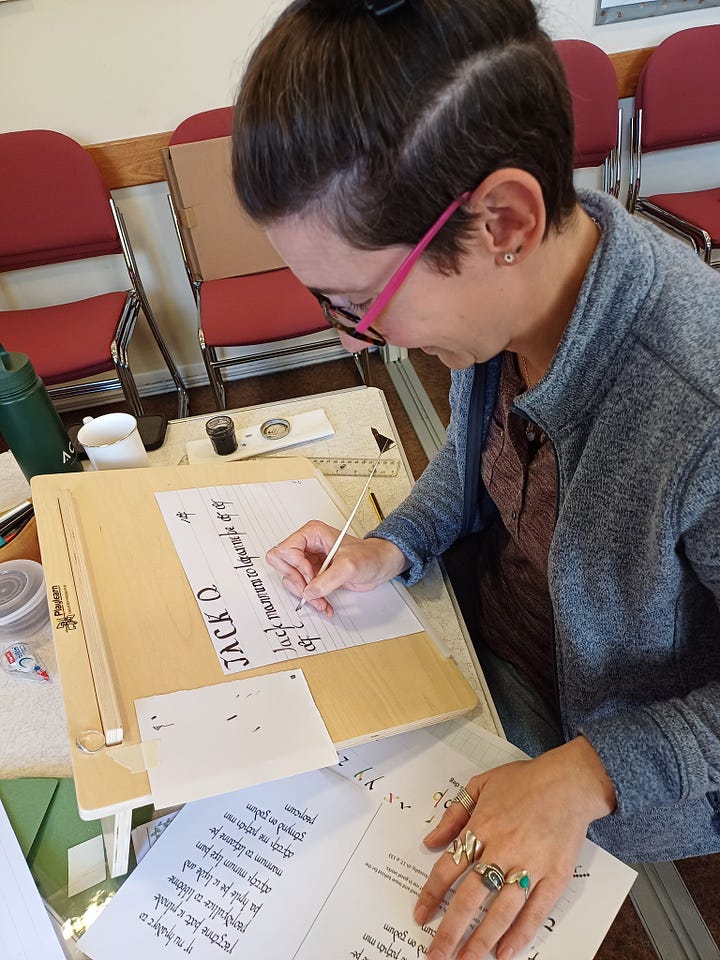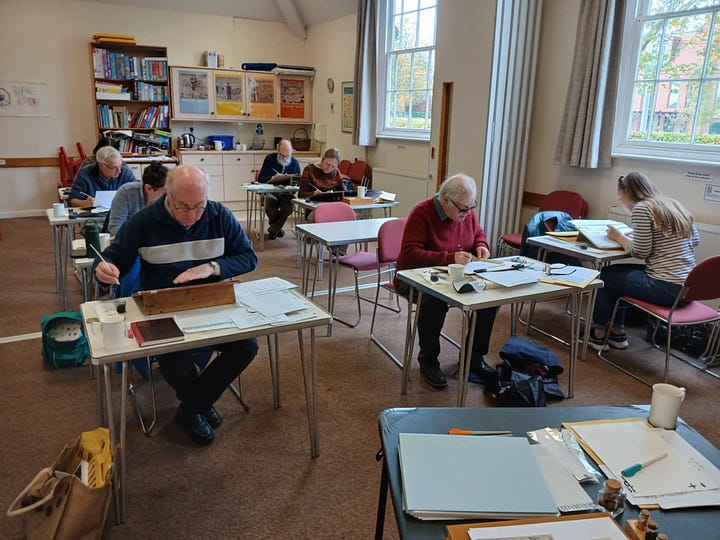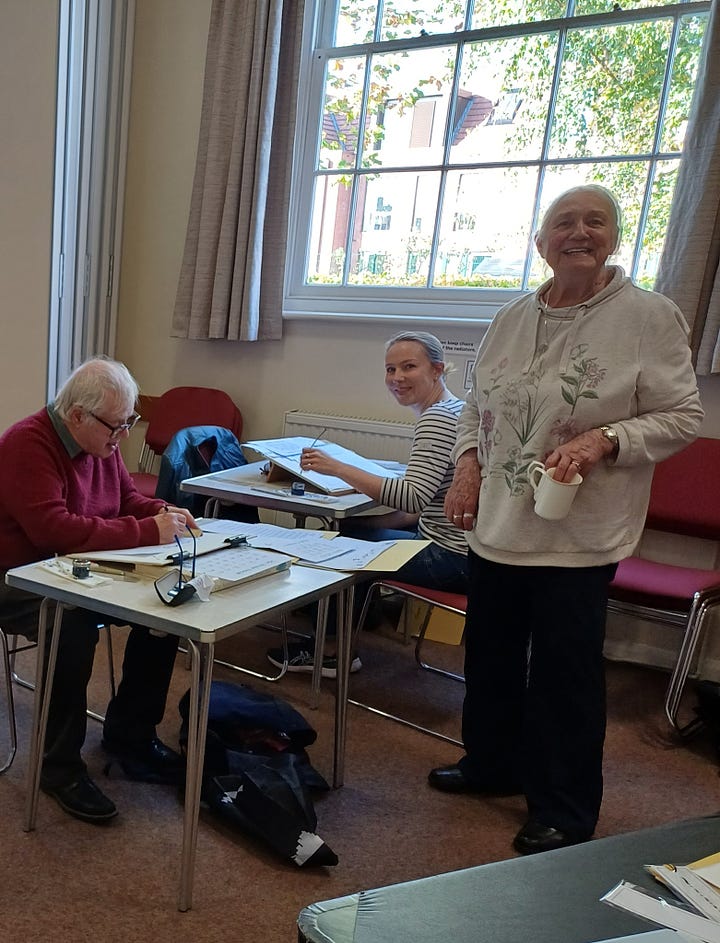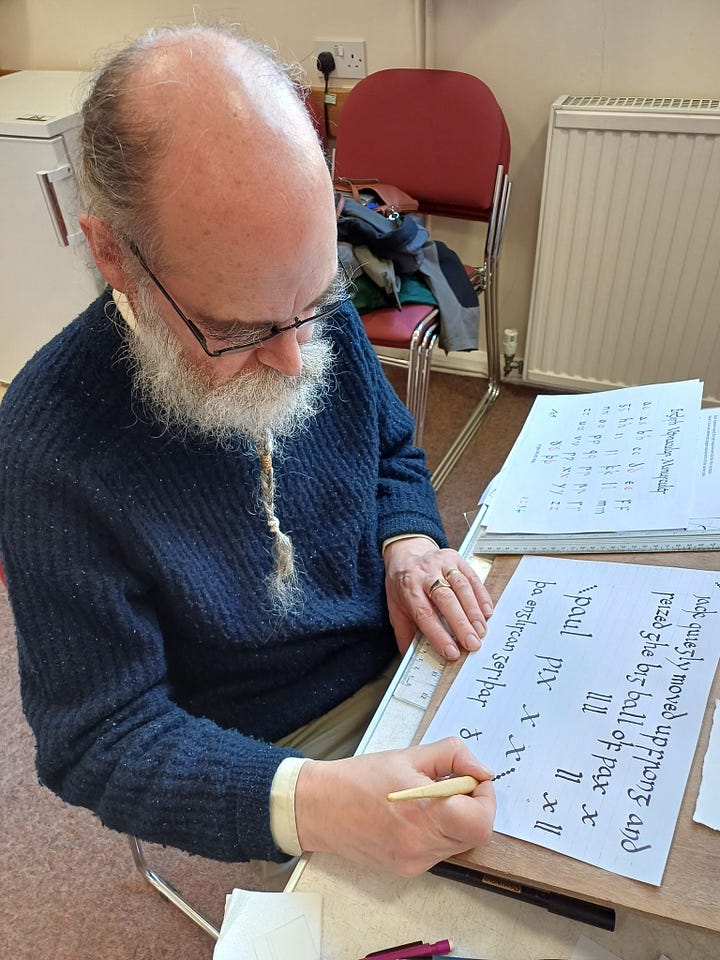Heritage in Focus: 002
In this issue, explore an initiative to amplify disabled voices, learn how calligraphy bridges cultural history and creativity, and discover cutting-edge technologies reshaping heritage conservation.
Feature Story: Heritage 2033
In honour of Disability History Month (this November), the National Lottery Heritage Fund’s "Investing in Disability Heritage" initiative stands out for raising the inclusion bar for heritage project funding. Following the introduction of the Heritage 2033 Investment Principles, all eligible projects must empower and amplify disabled voices to address their significant underrepresentation across the sector.
This initiative, outlined in the video below, also aims to encourage sustainable collaboration with diverse organisations, tackling digital exclusion and social isolation while highlighting and celebrating disabled communities' contributions. Supported projects to date include an array of fascinating oral histories, neurodiversity-focused efforts, and creative approaches to exhibitions, which serve to enrich our collective heritage narrative.
[Click on the video image below which redirects to YouTube]
Source: Heritage Lottery Fund, 2024.
Spotlight: Reviving Rusty Calligraphy Skills
At the end of October, we were invited to join a calligraphy workshop hosted by The English Companions (aka the society for Anglo-Saxon history) and to connect with this craftsmanship valued by Anglo-Saxon scribes. As a child I took up modern calligraphy as a hobby and still today I love to sign letters and Christmas cards with my calligraphy pens, adding a creative and memorable touch with my wax seal stamp.
This fascinating workshop led by expert calligrapher, Dawn Burgoyne from Reenactment Scotland, taught us that this ancient craft can serve as a vital bridge to cultural history as well as skills. Calligraphy is more than decorative writing—it serves as a window into the spiritual and philosophical values of different societies.
For example, Chinese calligraphy embodies the harmony and balance of Confucian and Taoist ideals, while Islamic calligraphy elevates the written word as a manifestation of divine wisdom. Engaging with these traditions allows modern calligraphers to connect with profound historical and cultural perspectives, enriching our understanding of diverse worldviews.
During the workshop, I was struck by the perception that left-handedness poses unique challenges in calligraphy—challenges I hadn’t previously noticed as a left-hander. This made me question whether these difficulties are inherent to the art form or a reflection of historical biases against left-handers, a form of discrimination documented over centuries.




Many people find the cost of calligraphy classes prohibitive, which makes affordable or free programmes like this one invaluable for reaching broader audiences, particularly younger people at the start of their careers or other underserved groups on lower incomes.
Partnerships between heritage organisations and community centres, such as the Friends Meeting House in New Earswick, York, play a vital role in bringing historical art forms to individuals who might not otherwise have any opportunity to participate.
For those who cannot or prefer not to attend in person, tools like the British Library’s “Turning the Pages”1 allow users to explore intricate manuscripts virtually, while the Digital Museum of Chinese Calligraphy uses digital platforms to preserve calligraphy’s cultural significance and reduce learning barriers.
Other popular apps such as Adobe Fresco and Procreate provide virtual brushes for remote practice, and artists like Seb Lester regularly share digitally animated calligraphy, making it more appealing as well as more accessible for those without the traditional resources.
Digital Heritage Initiatives
Geoweek News highlights the impact of accessible laser scanning tools in recording heritage sites to make conservation efforts more inclusive and effective.
Europeana delves into the integration of 3D technology and acoustics to recreate historical soundscapes, offering immersive ways to experience heritage.
Archeologists discover an ancient Mayan city using cutting-edge tools like Lidar, which emphasises the role of technology today in uncovering lost heritage sites.
AI pieces together fragmented frescoes in Pompeii providing new insights into Roman life while pushing the boundaries of heritage restoration technology.
Upcoming Webinars & Online Events
04/12/24: OpenHeritage - The rescue of 170-175 High Street, Sunderland
27/11/24: World Heritage Site Coordinators’ Forum
Web Weavings
This reflective piece by PA Museums connects heritage, storytelling, and community through the metaphor of weaving, exploring how interconnected histories and crafts shape cultural identities.
The Guardian reports on the National Trust's vote to make café menus 50% plant-based, raising questions about sustainability, branding, traditions, and modern dietary trends in heritage settings.
An RSA and British Council report calling for radical changes in the heritage sector to embrace diversity, innovation, and community engagement (an older article covering persistent issues).
Tech UK explores how AI is breaking barriers and fostering inclusion, with potential applications for expanding access to heritage and culture.
Archeology UK unearths the archaeological origins of Halloween traditions, shedding light on how historical rituals influence modern celebrations.
A surprising archaeological discovery challenges long-held assumptions, emphasising the importance of revisiting historical narratives with fresh evidence.
Rachel Thomas, PhD, examines the role of qualitative data in AI development, highlighting its importance for inclusive approaches in heritage technology and education.
Thank you for reading! Look out for more ways to access the world of heritage in the forth coming November careers issue. Have a question, event, or a story to share? Just reply to this email or reach out to clare@accessheritage.org.



